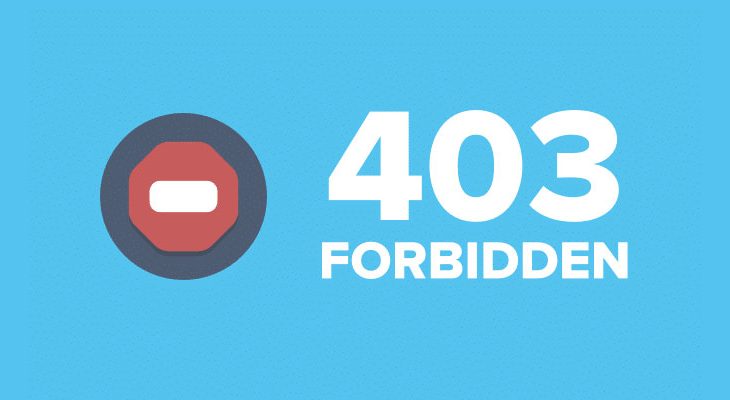If you get “403: Access Forbidden” or “403 Forbidden” Error on visiting a website, it means that the file, URL or folder that you are trying to access has been denied, either intentionally, or due to a faulty configuration. In this article, we will look at how to fix this problem, in case your website visitors are also facing it.
What is 403 Forbidden Error
As mentioned above, website visitors get this error when they do not have access permissions to the URL, file or folder that they visit. Here are the most common error messages people get, depending on their server configuration:
- 403 Forbidden
- HTTP 403
- Forbidden
- Forbidden: You don’t have permission to access [directory] on this server
- HTTP Error 403.14 – Forbidden
- Error 403
- Error 403 – Forbidden
- HTTP Error 403 – Forbidden
Also Read : How to Back Up Website using cPanel
What Causes a 403 Forbidden Error
403 Forbidden Error is almost always caused due to lack of required permissions for the requested URL, file or folder. This may be intentionally so, or due to a misconfiguration.
Also Read : How to Remove Malware from Website
How to Fix 403 Access Forbidden Error
Here are the steps to fix 403 Access Forbidden Error for your website.
1. Check Requested URL
Make sure that you are requesting a URL, or file, and not a directory. Most websites are configured to disallow directory browsing. For example, if you try to visit www.website.com/product instead of www.website.com/product/nike-shoes.html, you are likely to get 403 Access Forbidden error. In such cases, change the requested URL and you should be able to access the page.
2. Clear Browser Cache
You might get 403 Forbidden Error if there are issues with the cached version of the web page you are trying to access. If you are a website visitor, clear browser cache and try accessing the web page. If you are a website owner, the restart your web server (e.g. NGINX) to clear server cache.
3. Log in
Sometimes, you may be required to be a logged in user, to be able to access certain web pages and files. In such cases, log into that website and then access the web page.
4. Clear Browser Cookies
If you are logged in and still getting 403 Forbidden Error, then clear browser cookies and try logging in again.
Also Read : How to Choose a Web Hosting Service
5. Contact Site Administrator
If it is a large website with many pages, and this error occurs only on specific web pages, then it is advisable to contact website administrator and inform them about it. It is possible that you are seeing the error due to a misconfiguration and the administrator is not aware about it.
6. Check .htaccess file
If your website runs on Apache web server, check the .htaccess file to see if someone has accidentally denied the requested URL. If in doubt, either temporarily disable .htaccess or install a new .htaccess file to see if the error persists.
7. Check File permissions
Sometimes the requested file (e.g image/pdf) may not have appropriate permissions to be served by your website. This can happen especially after you upgrade your operating system. So inspect those requested resources to ensure that they have the appropriate permissions to be served over your website.
8. Disable Plugins
If your website uses WordPress, consider disabling all plugins and then enabling them one-by-one while checking if you still get the error. If you have started getting 403 Forbidden Error after updating a plugin or WordPress theme, consider rolling it back to the previous version.
Hopefully, the above tips will help you fix 403 Forbidden error on your website.
Related posts:
How to Replace All Occurrences of String in JavaScript
How To Clone Git Repository in Ubuntu
How to Take Screenshot of Div in JavaScript
Shell Script to Backup MongoDB Database
VPS vs Shared Hosting : In-Depth Comparison
How to Write Limit Query in MongoDB
How to Remove Malware from Website
How to Backup WordPress to Dropbox

Sreeram has more than 10 years of experience in web development, Python, Linux, SQL and database programming.
